Artist Interviews 2023
Iwona Sacharz 
By Julia Siedenburg
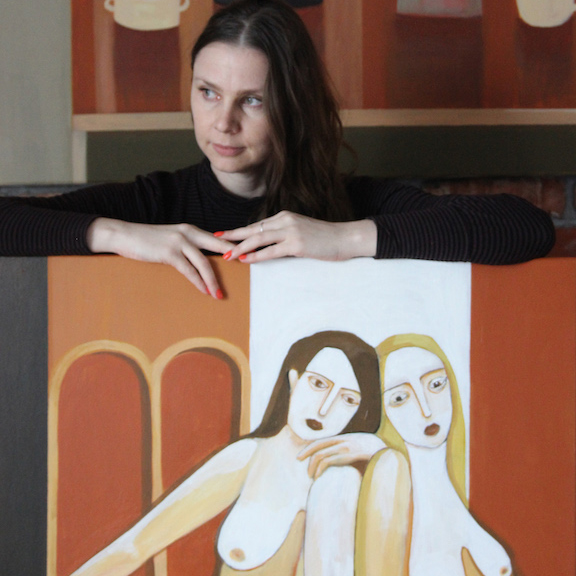
Iwona Sacharz is a true magician with a paintbrush. Her beautiful female-focused paintings are real eye-catchers. Sacharz’s colorful creations combine women’s forms with linear aspects, which bring a sense of calmness, yet still, stay very engaging. Her inspiration comes from the cubism and the avant-garde stylistics cannot be missed.
I am so happy that we have this talented artist sharing a bit about her work and her process with us. I very much enjoyed learning more about her and I hope so do you, dear reader.
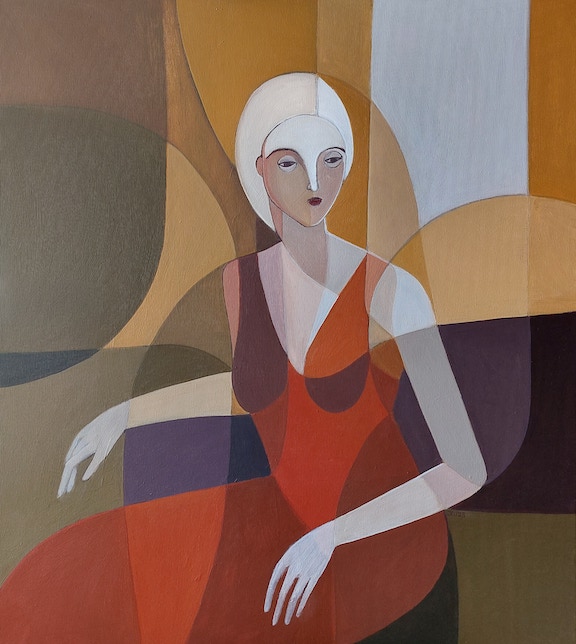
How would you describe your style?
It's just my style. But if I had to compare it to the one that is known in the art world, maybe it's a bit of Cubism.
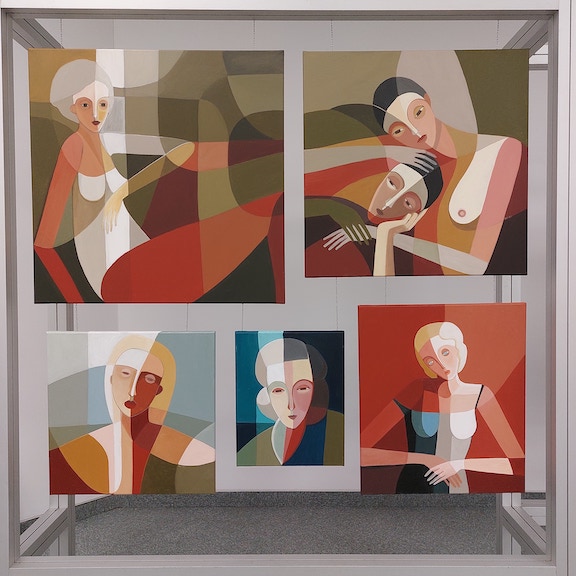
Do you have to be in a certain mood to paint?
Difficult question. I think I don't have to be sad or happy to be able to paint. I try to paint every day. No matter how I feel.
I like to paint early in the morning when the whole house is still asleep. I used to be a night owl, but now I prefer early mornings. When I paint, I am absorbed in my work.
I disappear into my own world for a while. It calms me down when angry and helps me forget my problems. Sometimes it's harder to paint, and sometimes it's easy. I think it's normal. Maybe it depends on my mood, whether I'm tired, or how long I haven't painted. Regardless, I am able to create an image that I am happy with.
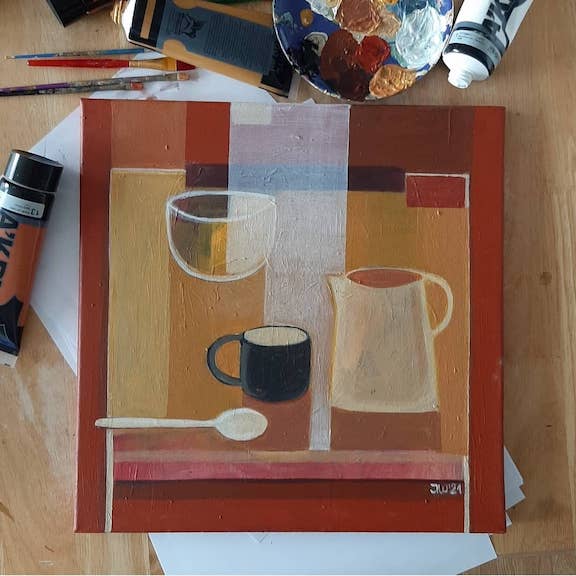
Which artist is your biggest inspiration?
There are many artists I admire. I am inspired by the works of Nowosielski, Łempicka, William Scott, and Modigliani. I also like to observe contemporary artists. Diversity inspires me.
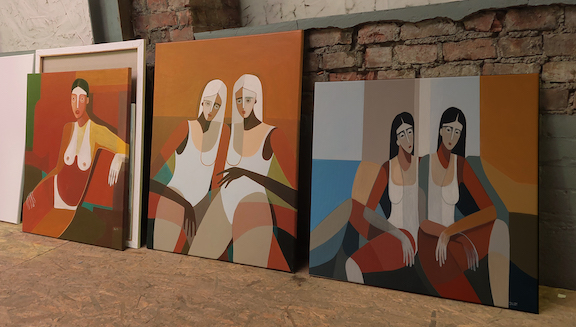
Your latest images focus mainly on women. Why are women your main subject?
It is a really hard question. Someday I thought I needed to paint something different than pots and pans.
The first painting which depicted a woman made me want to create another one. I feel these women are important to me. Everyone is different and has different emotions. There are a lot of these emotions, and that's why I keep painting more women.
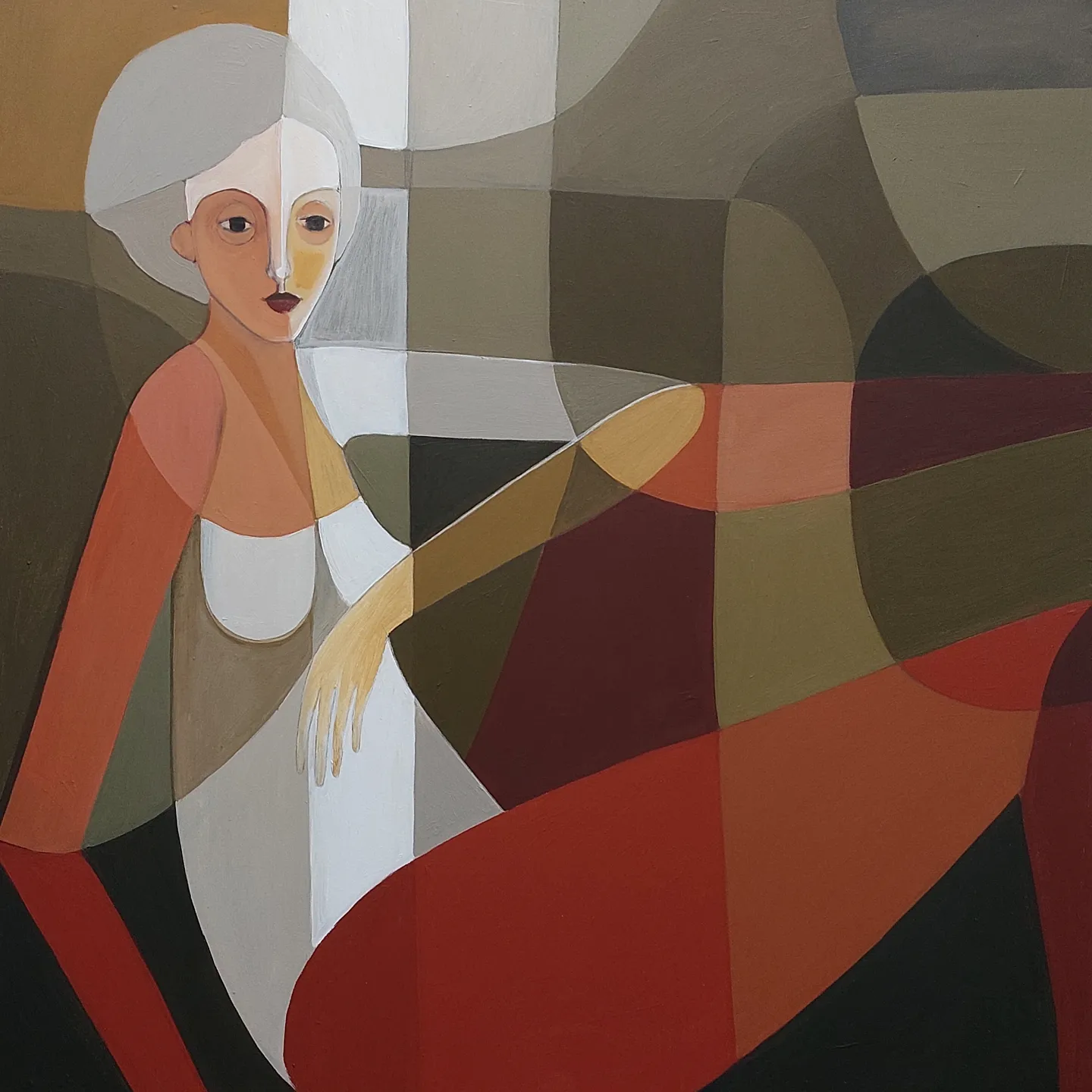
Are the women that you paint people you know or made up?
They're actually made-up characters. They arise in my head. Very often while painting I think about someone I know, but I don't paint this person, but the color of their hair, their look, or just something that reminds me of them.
The funny thing is that I often hear from others that the woman in my painting looks like someone famous or close to them. I can imagine that the women I paint can really exist. They have their own problems, emotions, and relationships.
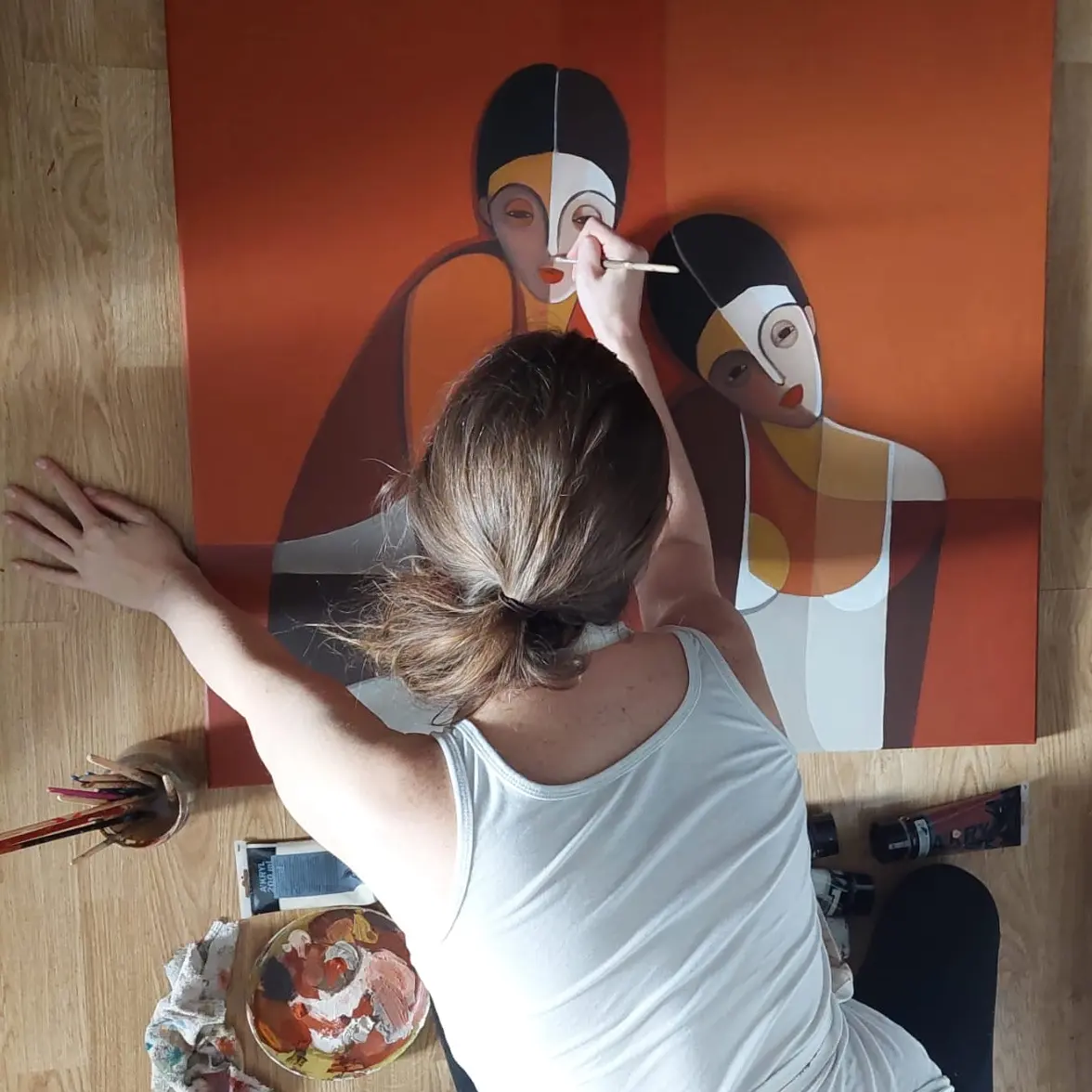
How long does it take from the idea to the finished painting?
Before the painting is created, I draw a sketch. Often several sketches. I think about the layout of the body, hands, etc. At this stage, I'm not thinking about colors yet. Composition comes first, then colors. The whole process depends on the difficulties that arise in my head. Sometimes I paint a picture quickly, as if I had been carrying it inside me for a long time.
It also happens that before I get the effect I expect, I paint for a long time, rework, finish, and start again. I often have to put work off until later. I hide the unfinished painting and don't look at it for very long. After that time, I have another idea for it and start over.
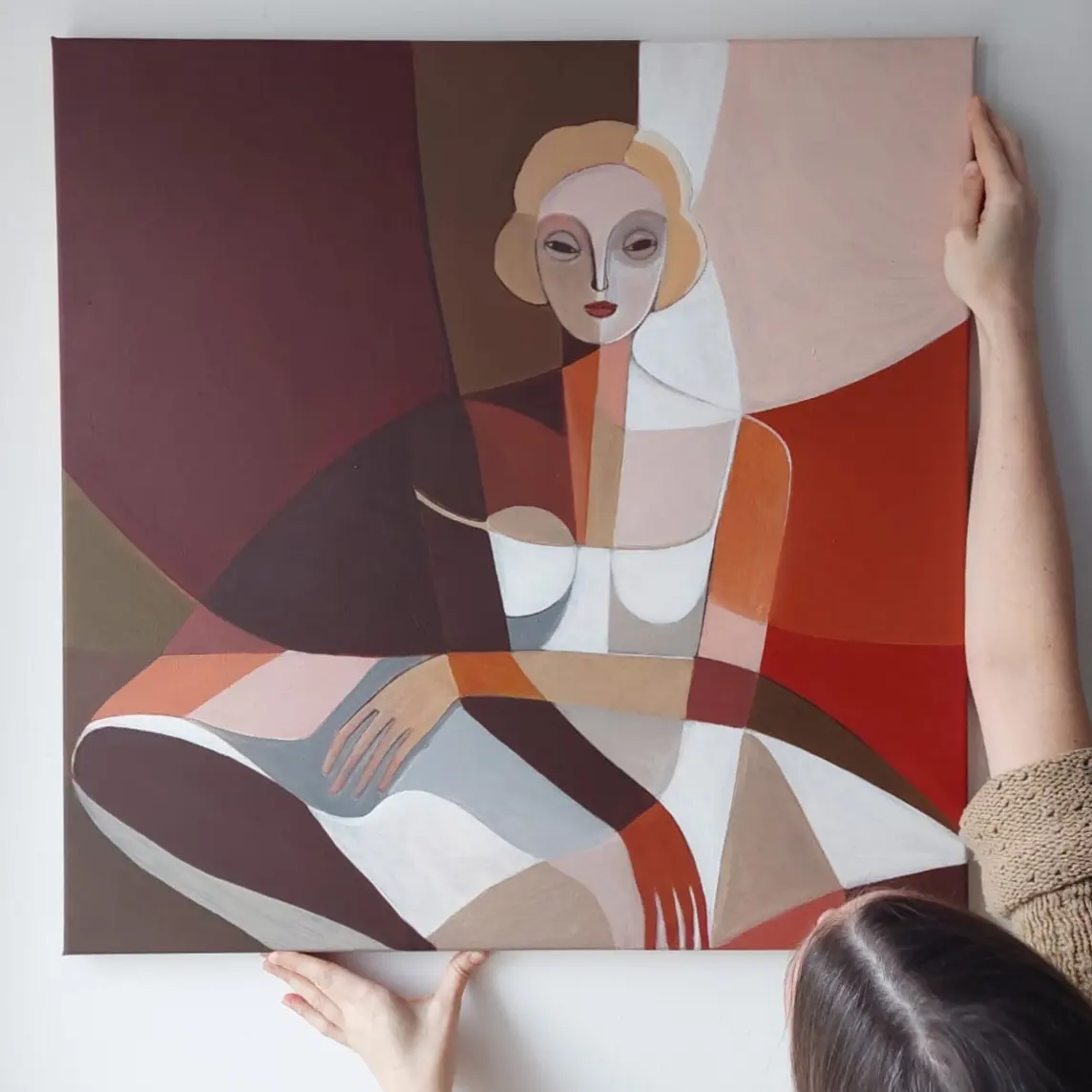
What inspired you to draw cups, pots, and pants as your earlier work?
When I was at school, I painted still life very often and a lot. There was a moment when I stopped liking it. For a long time it seemed to me that still, life cannot be interesting and pretty. After college, I didn't hold a brush in my hand for a long time. I felt that perhaps painting is not for me. I am a ceramicist and a photographer by profession, so I thought it would be enough.
Now I know that painting has always been a part of me. It took a long time before I painted the first painting that I was proud of. I tried to paint different subjects. I didn't feel good at all. One day I thought to return to the topic of still life. I painted her so many times in college... I wanted to paint her differently than at school. I wanted to paint it the way I like it. I gave up on realism and perspective. I focused on color, composition, and simplicity.
Then I created something that I started to like. It was the first time I looked at my paintings and I didn't want to destroy them. I liked painting even more. I loved the creative process that I developed.
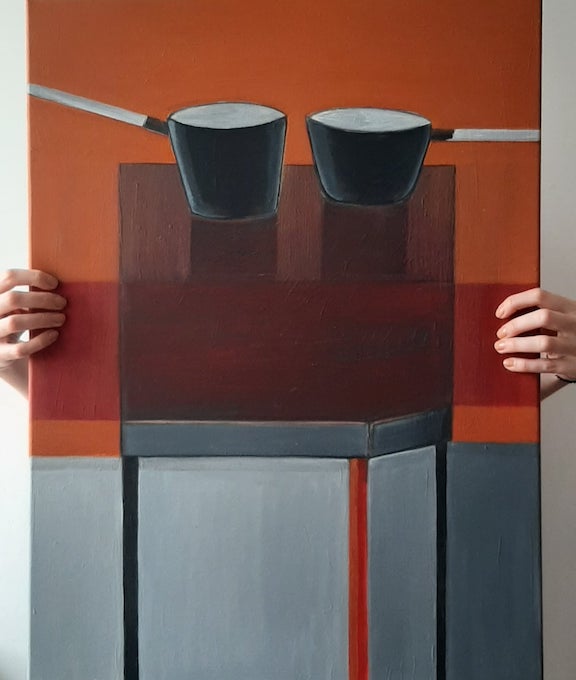
Tell us a bit about your upbringing and childhood.
I grew up in the countryside. I have always been surrounded by nature, my family, and animals. I have four siblings and my parents cared about my education and supported me a lot. As a child, I wanted to be famous :)
At first, I thought that I sang beautifully, then that I danced wonderfully. Of course, none of this was true. I wanted to be an actress, a teacher, and finally a fashion designer. As a child, I loved to paint. I have sketchbooks that I filled with drawings.
At some point, my talent was discovered by an art teacher. I inherited from my father a certain spatial sense and the ability to choose colors. I didn't feel special or talented, but I decided to try my hand at art school. I've always been shy and insecure, so it wasn't easy for me. I remember art school as a challenge. It was hard for me to find my place in it.
However, I also think about those years with great nostalgia. It was there that I discovered how much I love art. And now that I think about it, I am extremely grateful to the people who helped me become who I am.
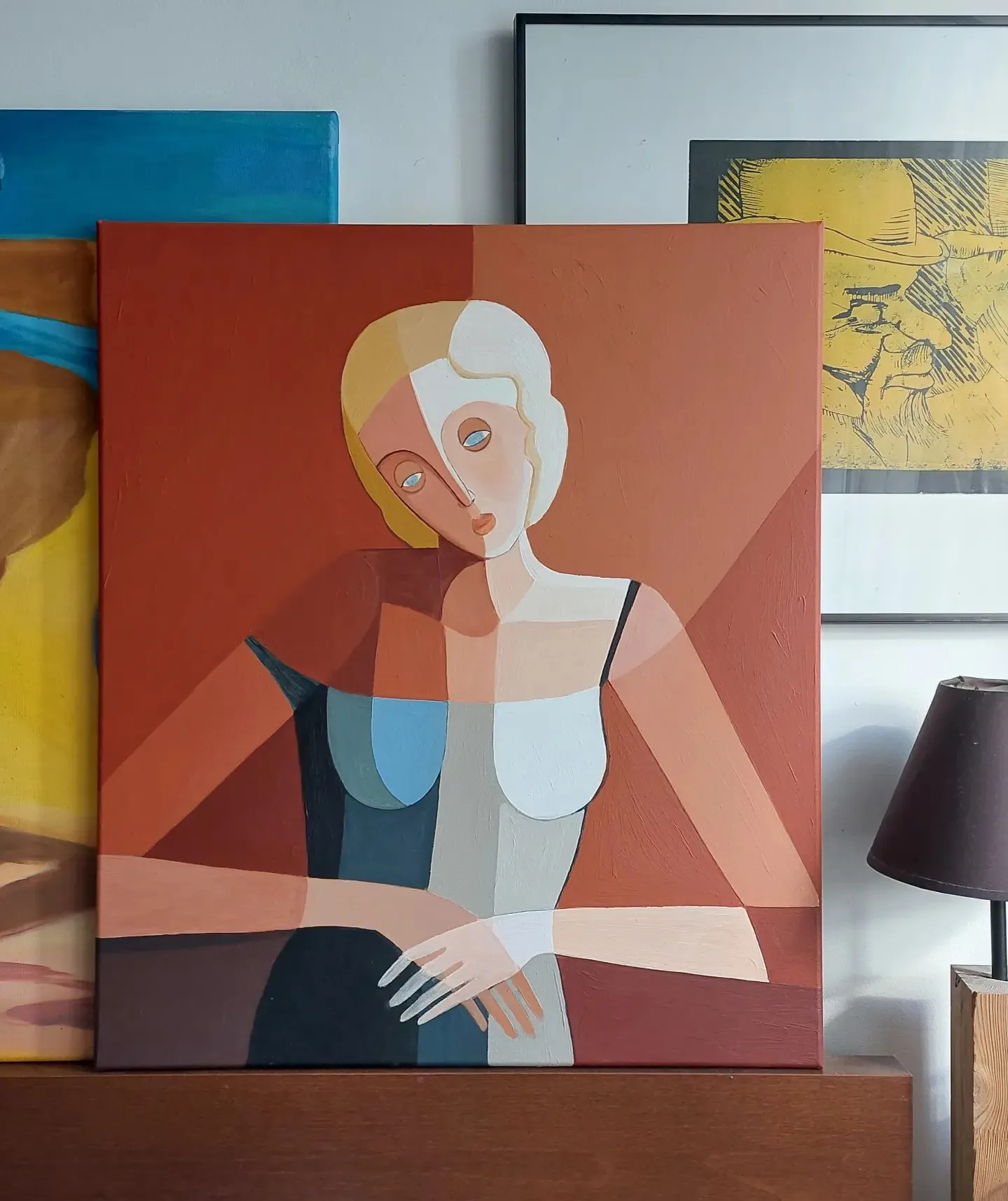
How do you choose your color? Do you decide on the colors before you start painting?
When I start painting I think about what colors I want my painting to be, but when painting everything changes. Sometimes I can't control it. The colors just appear where they should be, and that's magic.
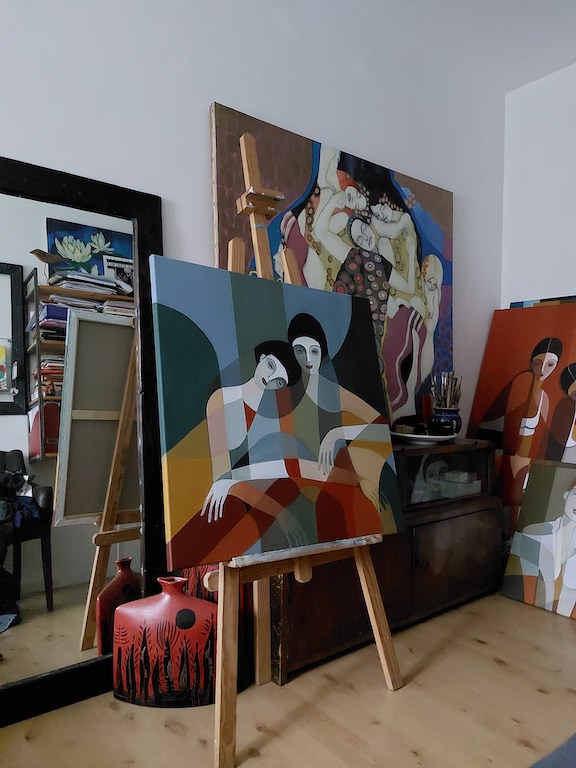
What is next? Any other subject you plan to draw on in the future?
Another difficult question. I don't know. It depends on what life brings. Maybe it's time for landscapes. Who knows... For now, there is still a lot of emotion to be painted on women's faces.
|
|

